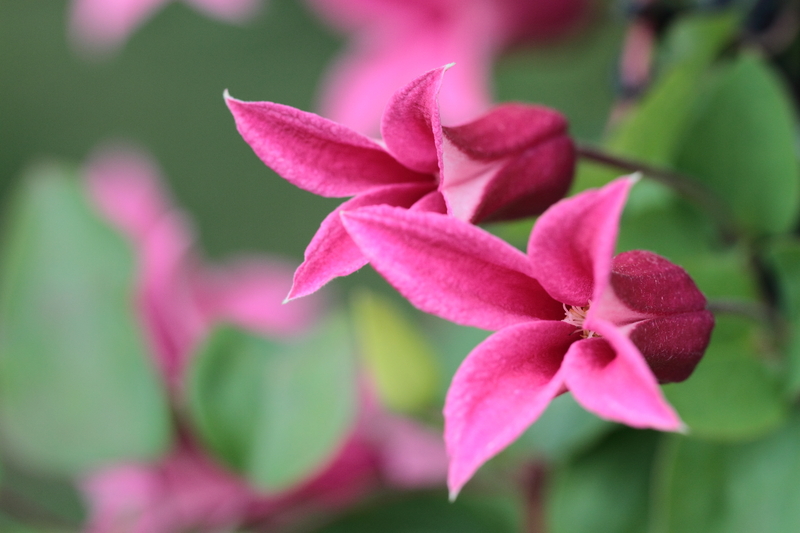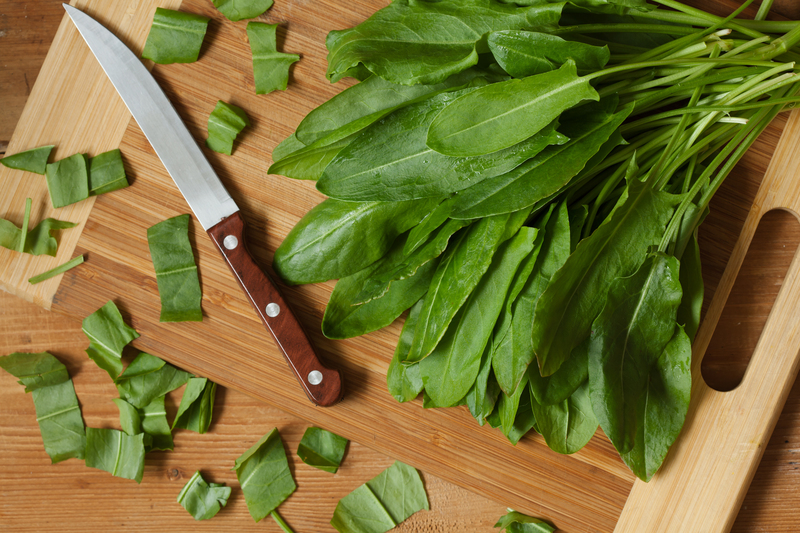Make Your Garden Dog-Safe and Beautiful
Posted on 21/09/2025
Make Your Garden Dog-Safe and Beautiful
Are you dreaming of a stunning garden that's also safe for your four-legged companion? You don't need to compromise beauty for your furry friend's well-being! By making a few strategic choices, you can easily design a dog-friendly garden that's verdant, vibrant, and secure. This comprehensive guide will walk you through the most important steps to make your garden dog-safe and beautiful, including plant selection, landscaping ideas, fencing, and more.
Why Make Your Garden Dog-Safe?
Our pets are curious by nature and love exploring the outdoors. While playtime in the garden is great for their physical and mental health, an unsafe garden can expose them to toxic plants, sharp tools, harmful chemicals, and escape routes. Creating a dog-safe and attractive garden isn't just beneficial for your canine, but also increases your peace of mind and ensures everyone enjoys your outdoor oasis.
Common Hazards for Dogs in Gardens
- Toxic plants and bulbs (e.g., lilies, daffodils, azaleas)
- Chemical fertilizers, pesticides, and herbicides
- Sharp garden tools or edging
- Unstable fences and open gates
- Uncovered ponds or water features
- Small objects or mulch that could be ingested

How to Design a Safe & Stylish Dog-Friendly Garden
Step 1: Plan Your Garden Layout
Consider your dog's personality and exercise needs before laying out the garden. Active breeds may need more space to romp, while smaller or quieter dogs might prefer shady spots to nap.
- Dedicate a dog zone: Set aside an area with soft grass or pea gravel for running and playing.
- Paths and trails: Dogs love to patrol. Create winding paths with sturdy materials such as flagstone or brick. These are paw-friendly and durable.
- Rest areas: Place benches or dog beds under trees or pergolas, providing cool shade during hot weather.
Step 2: Choose Dog-Safe Plants
Selecting pet-friendly plants is crucial. Many common ornamentals are toxic to dogs if chewed or ingested. To keep your garden beautiful and secure, use a mix of colors, textures, and heights from the following non-toxic plants:
- Roses (choose thornless varieties if possible)
- Sunflowers
- Marigolds
- Snapdragons
- Basil, thyme, and sage
- Camellias
- Magnolias
- Ornamental grasses (such as Carex and Pennisetum)
- Violets and pansies
Avoid known toxic plants such as foxglove, lilies, hydrangea, azalea, and daffodils. Always consult a reliable list of dog-safe garden plants before planting, and check for local varieties that might be harmful.
Step 3: Select the Right Ground Cover
Dogs can quickly wear out grass or dig holes. For areas with lots of foot traffic, choose durable ground cover options:
- Clover: Stays green, drought-tolerant, and safe if nibbled
- Buffalo grass: Soft and hardy, more resistant to urine spots
- Artificial turf: New varieties are realistic and safe, minimizing muddy paws
- Mulch: Use cedar or pine rather than cocoa mulch, which is toxic to dogs
- Flagstone or brick paths: Less likely to harbor sharp edges or splinters
Step 4: Secure Fencing and Gates
An escape-proof fence is essential for a secure garden for dogs. Here's how to make yours both functional and attractive:
- Choose a fence height that your dog can't jump over--most need at least 1.5 to 1.8 meters (5-6 feet).
- Eliminate gaps underneath that a digging dog could wiggle through. Add a buried barrier if necessary.
- Decorate with climbing plants such as jasmine, clematis, or honeysuckle (non-toxic choices), adding greenery and privacy.
- Secure gates with childproof locks or spring-loaded latches.
Step 5: Designate Dog Toileting Areas
Too many brown patches on your grass? Train your dog to use a specific toilet spot. This area can blend into your landscaping and keeps the rest of the garden lush.
- Use pea gravel, mulch, or fake turf, fenced off or bordered with low hedges.
- Add scent posts or a decorative marker to encourage your dog to use the spot.
- Clean regularly to keep odors in check and maintain a hygienic garden.
Dog-Safe Garden Maintenance Tips
1. Avoid Harmful Chemicals
Common fertilizers, weed killers, and bug sprays can be toxic for pets. Switch to organic, dog-safe gardening products. Try these solutions for a safe and beautiful dog garden:
- Compost: Homemade compost provides nutrients without chemicals.
- Mulch: Stick to non-toxic mulches.
- Natural pest control: Encourage birds or beneficial insects, like ladybugs, which control harmful bugs naturally.
2. Choose Safe Mulches and Pebbles
While many gardeners use mulch for moisture retention and looks, some kinds are dangerous for pets. For example, cocoa mulch contains theobromine (the same toxin found in chocolate), which is poisonous for dogs.
- Pine, cedar, and hemlock bark: Safe and aromatic
- Pea gravel or smooth river rocks: Decorative, doesn't stick to fur, and isn't toxic
Always avoid sharp stones, rubber mulches, or anything dogs might chew and swallow.
3. Safe Water Features
A small pond or fountain adds beauty and tranquility to your garden, but can be a hazard if your dog slips or drinks contaminated water. Here's how to have both:
- Cover ponds or use shallow, gently sloping sides for easy entry/exit.
- Choose birdbaths or fountains with fresh water and circulate regularly to avoid bacteria buildup.
- No chemicals: Never use algaecides or treatments toxic to pets.
4. Store Tools and Supplies Safely
Keep sharp tools, fertilizers, and poisons locked away in a shed or sealed container. Dogs are inquisitive and may chew or lick new items.
5. Prevent Digging and Chewing Damage
Some dogs can't resist digging. While you can't always stop them, you can minimize damage:
- Provide a dig zone: Fill a sandbox or loose area with fun toys and treats to encourage digging there.
- Add deterrents: Use large, decorative rocks or wire mesh around delicate flower beds.
- Supervise and train: Reward good behavior and redirect attention when digging starts elsewhere.
Beautiful Garden Inspiration for Dog Owners
1. Raised Beds and Containers
Raised beds can keep delicate plants and vegetables out of reach from curious pups. Choose sturdy materials (like brick, stone, or thick timber) and use sleek, modern planters for additional height and style.
2. Sensory Gardens for Dogs
Enhance your dog's experience by planting scented herbs (rosemary, lavender, mint) and adding areas with soft sand to roll in. A sensory garden stimulates your dog's senses while still looking lush.
3. Agility and Play Areas
Include tunnels, ramps, or small jumps for active breeds. These features provide physical exercise, mental stimulation, and fun--while making your dog-friendly garden more beautiful and unique.
4. Mix Evergreens and Perennials
Combining evergreen shrubs (like boxwood and viburnum) with colorful perennials ensures your dog-safe garden stays appealing through all seasons. Evergreens provide structure, while perennials offer continual blooms.
Quick Checklist for a Dog-Proof and Gorgeous Garden
- Secure, tall fencing with no gaps or weak spots
- Use ONLY non-toxic plants and trees
- Install durable, paw-friendly paths
- Designate toilet and play areas
- Opt for safe mulches and ground covers
- Install safe water features
- Choose stylish raised beds and containers
- Store tools and chemicals safely out of reach

Frequently Asked Questions: Dog-Safe and Beautiful Gardens
Can I have a lush flower garden and still keep my dog safe?
Yes! By carefully selecting non-toxic flowers (such as marigolds, snapdragons, pansies, and sunflowers) and using raised beds, you can create a beautiful flower garden that's pet-friendly.
What is the best ground cover for dog runs?
The ideal ground cover is clover or buffalo grass because both are durable and gentle on paws. For easy maintenance, choose artificial turf or pea gravel in busier areas.
Which mulch is safest for dogs?
Use only pine, cedar, or hemlock bark mulch. Avoid cocoa shell mulch and pieces large enough to swallow.
How can I stop my dog from digging in the garden?
Give your pet a specific area where digging is encouraged (like a sandbox), and use deterrents such as large stones or mesh elsewhere. Consistent training and redirection works wonders.
Conclusion: Enjoy Your Dog-Safe and Beautiful Garden
With thoughtful planning, you can achieve the perfect balance between a safe garden for dogs and an outdoor space that delights the eyes. Whether you're adding vibrant flowers, secure fences, or doggy play zones, small adjustments make all the difference. By following this guide to make your garden dog-safe and beautiful, you'll ensure that both your family and your pet can enjoy your backyard paradise for years to come.
Want more tips on pet-friendly gardening? Bookmark this guide, and share your dog-friendly garden ideas with fellow dog lovers!

